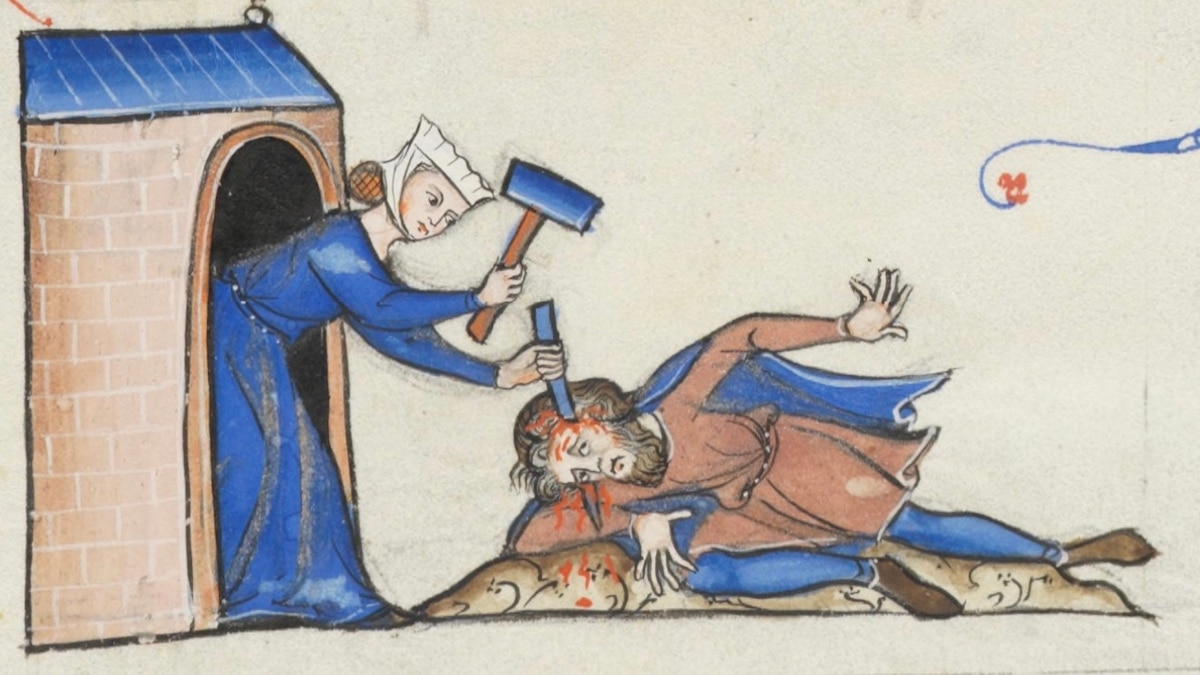Now Reading: Was this woman the Cersei Lannister of medieval London?
-
01
Was this woman the Cersei Lannister of medieval London?
Was this woman the Cersei Lannister of medieval London?

The 1337 murder of the priest John Forde in the heart of medieval London was especially gruesome: one attacker slit Forde’s throat with a dagger while two others stabbed him with “long knives” in the belly. He was then left to bleed to death.
Violent crimes often happen in hidden places, but Forde’s murder was designed to be seen, says a criminologist who has uncovered new documents that shed light on the motivations behind the killing.
“This was very much the Fifth Avenue of medieval London,” explains Manual Eisner, a researcher at the University of Cambridge and the lead author of a new paper on the murder. “It was the place to be.”
The slaying may have been an act of revenge after a love affair turned sour, according to Eisner, who has pieced together the story from contemporary letters and legal records that were previously published but overlooked.
(Think “Bridgerton” is scandalous? Here’s the sordid history behind these English country homes.)
They reveal that Forde may have conducted an adulterous affair several years before his death with an English noblewoman named Ela Fitzpayne; and the star-crossed lovers also seem to have once been accomplices in crimes of extortion and cattle rustling in the Dorset region, far from London in the southwest of England.
Several witnesses to the murder were among the medieval “coroner’s jury” convened to investigate the killing. Written records of the investigation, in Latin, note that Forde was attacked during “pleasant conversation” with a fellow priest named Hasculph Neville, who seems to have been part of the conspiracy. The witnesses also recognized Ela’s brother and servants among the attackers. But nobody admitted to knowing how to find them—and so only one servant was ever jailed for the attack, and only several years later.

The interior nave of the Salisbury Cathedral in England, where Ela Fitzpayne was ordered to do penance by walking its length once every seven years. The cathedral has the longest nave in England.
Photograph by Julian Elliott Photography, Getty Images
Eisner thinks the attack was meant to send a message that the English aristocracy could do whatever it wanted, especially against what it saw as the upstart power of the church. “If they wanted to just kill a lowly priest, then they could have easily done that in a corner somewhere,” he says. “The public execution style of Forde’s killing, in front of crowds in broad daylight, is similar to the political killings we see now in countries like Russia or Mexico. It’s designed to be a reminder of who is in control.
GETTING AWAY WITH MURDER
The attack took place a little before sunset on May 4 in 1337, in a street now called Cheapside but then called Westcheap, beside the old St. Paul’s Cathedral at the center of London. The street was a center for powerful guilds of artisans like the goldsmiths and saddlers, home to numerous taverns and alehouses, and often a place of revelry. Violence was common, especially during quarrels between artisan and merchants or between rival gangs of guild apprentices.
“Where rule of law is weak, we see killings committed by the highest ranks in society, who will take power into their own hands, whether it’s today or seven centuries ago,” he says.
You May Also Like
But the Forde murder stood out. The coroner’s jury consisted of 33 men—usually there were 12—which shows how seriously it was taken, says Eisner, who heads the Medieval Murder Maps project. Based on reconstructed maps of London, Oxford and York, with information recorded in the coroner’s rolls from the time, the project shows Westcheap was a medieval murder hotspot.
(The majestic medieval churches along Europe’s pilgrimage paths)
A WALK OF SHAME
Ela Fitzpayne’s supposed affair with Forde was documented by the Archbishop of Canterbury himself, in a scathing letter written four years before Forde’s bloody demise. In the missive, the archbishop accused Fitzpayne of sexual affairs “with knights and others, single and married, and even with clerics in holy orders.” But the letter named only Forde—a parish priest in the part of Dorset owned by the Fitzpayne family—who was apparently once considered a member of the Fitzpayne household.

The handwritten coroner’s report of the murder of John Forde. Forde had his throat slit publicly near St. Paul’s Cathedral, and records suggest his murder was a revenge killing and statement against the church.
Photograph by the London Archives, EurekAlert
The archbishop then demanded Ela Fitzpayne perform penance by undertaking barefoot “walks of shame” once a year for seven years at Salisbury Cathedral.
While there’s no proof that Fitzpayne and Forde were in fact lovers—and there are no records that Ela ever performed the penance—the imposition of such a humiliating penalty on a noblewoman must have rankled the English aristocracy, Eisner says.
Her husband, Robert Fitzpayne, was a feudal baron from Dorset and a prominent supporter of the English king Edward III, who had come to power after the doubtful abdication of his predecessor Edward II. Robert Fitzpayne, too, was named in the accusations of extortion and cattle-rustling in Dorset with Ela and Forde, but there are no related court records. Meanwhile, Robert continued to enjoy royal favor and Ela inherited his property when he died in 1354.
(What life in medieval Europe was really like)
Some other historians see a “personal” dispute behind the murder, but they agree with Eisner that it may also have served as a warning. “I take [Eisner’s] point that this was an aristocracy with particular values and characteristics, pushing back against a competing set of moralities, behaviors and controls,” says Vanessa Harding, head of the Historic Towns Trust that created the maps used by the project (she was not involved in the new research.)
Eisner maintains there were political aspects to the murder: “The attempts to publicly humiliate Ela Fitzpayne may have been part of a political game,” he says, “as the church used morality to stamp its authority on the nobility—with John Forde caught between masters.”























